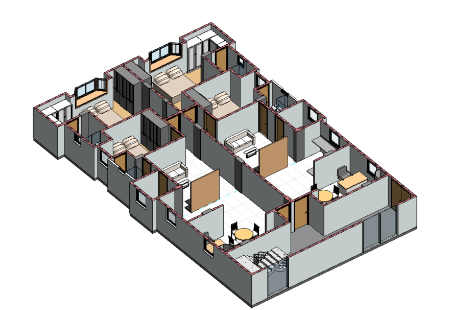In the world of architecture, it’s not enough to just design a building – you also need to be able to show others what it will look like once completed. That’s where photorealistic renderings come in. These are highly detailed, 3D images that look almost like real photographs of the building, even though it doesn’t exist yet. Here are five reasons why photorealistic renderings are essential for architectural success.
1. Helps Clients Visualize the Design
For most people, understanding a design from a set of 2D drawings can be challenging. Photorealistic renderings provide a much clearer picture of what the building will look like in real life. Clients can see the building from different angles, inside and outside, and understand how materials like glass, wood, and concrete will look in the finished product. This makes it easier for them to make decisions and give feedback on the design.
2. Identifies Design Problems Early
Even the most experienced architects and designers can miss something in a set of 2D drawings. Photorealistic renderings allow architects and clients to spot potential issues before construction starts. For example, it may become clear that a window is too large, or the layout of a room doesn’t quite work. Catching these problems early saves time and money, as it’s far easier to make changes before construction begins.
3. Supports Project Approvals and Funding
When presenting a design to investors, stakeholders, or government officials for approval, clear and realistic images can make a big difference. Photorealistic renderings help convey the vision of the building in a way that 2D drawings cannot. The more realistic the images are, the more confident people will feel about the project, which can help secure funding and approvals.
4. Enhances Marketing and Selling
For buildings that are being sold or rented, such as apartments, offices, or retail spaces, photorealistic renderings are a powerful marketing tool. Potential buyers or renters can see what the finished space will look like, making them more likely to be interested in the property. Since these images look so realistic, they can create excitement and attract attention.
5. Provides a Clear Communication Tool
When working on a construction project, there are many people involved, from architects to engineers to contractors. Clear communication is key, and photorealistic renderings help everyone understand the design. They act as a visual reference that ensures everyone is on the same page, reducing the risk of mistakes and misunderstandings during construction.


In conclusion, photorealistic renderings are an essential tool in architecture. They help clients visualize the design, identify problems early, support approvals and funding, enhance marketing efforts, and improve communication. By using these realistic images, architects can ensure their projects are successful from start to finish.